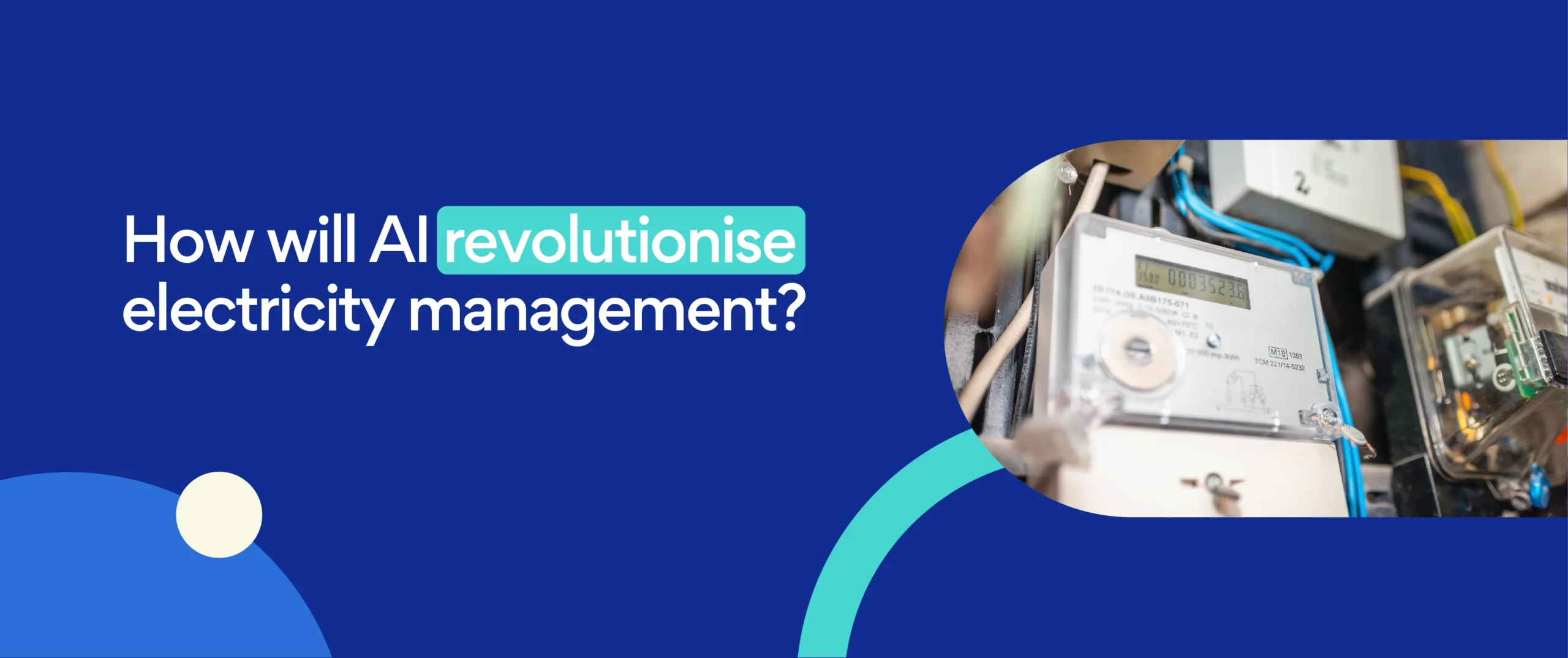How Will AI Revolutionise Electricity Management?

How will AI revolutionise electricity management?
Electricity generation is changing dramatically as Britain aims for Net Zero. In the past, electricity was generated in large, central power stations and transmitted and distributed outwards to households and businesses over the electricity network.
The role of smart grids
The way we generate and use electricity is changing fast. Offshore wind, solar farms, rooftop solar, electric vehicles, and heat pumps are reshaping demand. As a result, distribution networks and becoming two-way systems. These new energy flows must be managed more carefully than ever before.
Smart grids are the answer. These use advanced technologies such as artificial intelligence (AI) and smart meters to balance the requirements of generators, network operators, households and businesses to monitor the network, improve its performance and optimise its usage. As the network becomes more complex, AI is the ideal tool to manage it.
In late 2024, the energy regulator Ofgem launched a consultation to see how AI in the energy sector could be used safely, securely, fairly and sustainably in Britain’s energy sector to encourage more innovation. Ofgem will release its findings this spring.
Before this is published, we looked at some different ways in which the energy sector can use AI with smart grid technology to deliver a system of energy management fit for the future.
Leveraging AI on smart meter data
If you thought “big data” was big, it’s already much bigger. We are already in what data experts call the zettabyte era. In 2016, global data traffic over the internet exceeded one zettabyte – that’s 1,000,000,000,000,000,000,000 – bytes – for the first time.
The evolution of electricity meters is a classic example of the proliferation of data. In the past, meters were read every three months (if that) and provided a single reading. The advent of smart meters has seen the volume of data grow exponentially. The introduction of Market-wide Half-Hourly Settlement (MHHS) means that even at the base level a smart meter will soon be delivering 48 reads every day.
Anyone attempting to analyse that volume of data manually will struggle and AI-powered tools can help wean out the nuggets of usable information from the raw data. Machine learning can use this data to spot network problems and predict usage patterns.
Improving smart grid efficiency with AI
Precious little of the energy that goes into generating electricity actually ends up being able to do useful work for the end-user. The wasted energy is lost in many different ways. A few percent due to line losses and conversion losses in transformers, for example.
Grid congestion, where the capacity to transfer electricity is not sufficient to transmit the available power from one point on the grid to another is also a growing issue as more renewable energy comes online.
AI in the energy sector can improve efficiency by optimising how electricity flows through the system.
Forecasting Energy Demand with AI
Changes in customer behaviour can play havoc with the best energy forecasts. Traditionally, the system has been run on rules. If it’s the ad break in the middle of Coronation Street, then prepare for lots of kettles to be switched on. Streaming services have changed that demand profile.
Rather than trying to envisage all possible scenarios in order to write rules, machine learning can be used to train neural networks, artificial brains that can learn to spot patterns in behaviour and then make forecasts based on those.
The power of AI in energy management systems also means that data that was considered too onerous to analyse in the past can now be handled easily. This means factors like weather patterns and major events can be analysed to predict how they correlate with changes in energy usage.
Smarter Tariffs and AI Enabled Dynamic Pricing
Companies in many sectors have embraced the idea of dynamic pricing. Back in 2013, it was revealed that Amazon was changing its prices 2.5 million times every day and that this had led to a 25% increase in revenue. Many companies, including Uber, have also embraced dynamic pricing.
While it can clearly help companies drive higher revenues, dynamic pricing can also work the other way, helping energy consumers save their bills. In a simplistic way, this is what homeowners on Economy 7 tariffs have done for decades. AI will help suppliers implement much more dynamic time-of-use tariffs. Scientific research has shown that adopting time-of-use rates decrease peak period energy usage. Selectively moving demand away from peak times will help the network be resilient.
How is AI in the Energy Sector Already Being Used?
The country’s energy operators are already looking to AI to make the network more reliable and efficient.
National Grid Energy Transmission has been working with Mesh-AI on a number of AI initiatives including developing a data-driven aid for risk management and leveraging machine learning for SF6 leakage tracking to meet Net Zero goals.
SSEN’s Storm AI project looked at the potential role that AI and machine learning can play in providing better information for customers who may have been impacted during a storm. The project used computer vision to classify customer-submitted images of storm-damaged network assets. After a successful trial, the technology will be integrated into SSEN’s Power Track tool.
UK Power Networks has started building a digital tool called AImee which uses machine learning and artificial intelligence to provide personalised support to help vulnerable consumers who are at risk of being left behind by the energy system transition.
How Procode is Powering the Future of Smart Grid Technology
Procode is an early adopter of leading-edge technologies, such as AI in the energy sector and machine learning. We have a laser-like focus on our customers’ needs and delivering them on schedule and on budget through Agile processes.